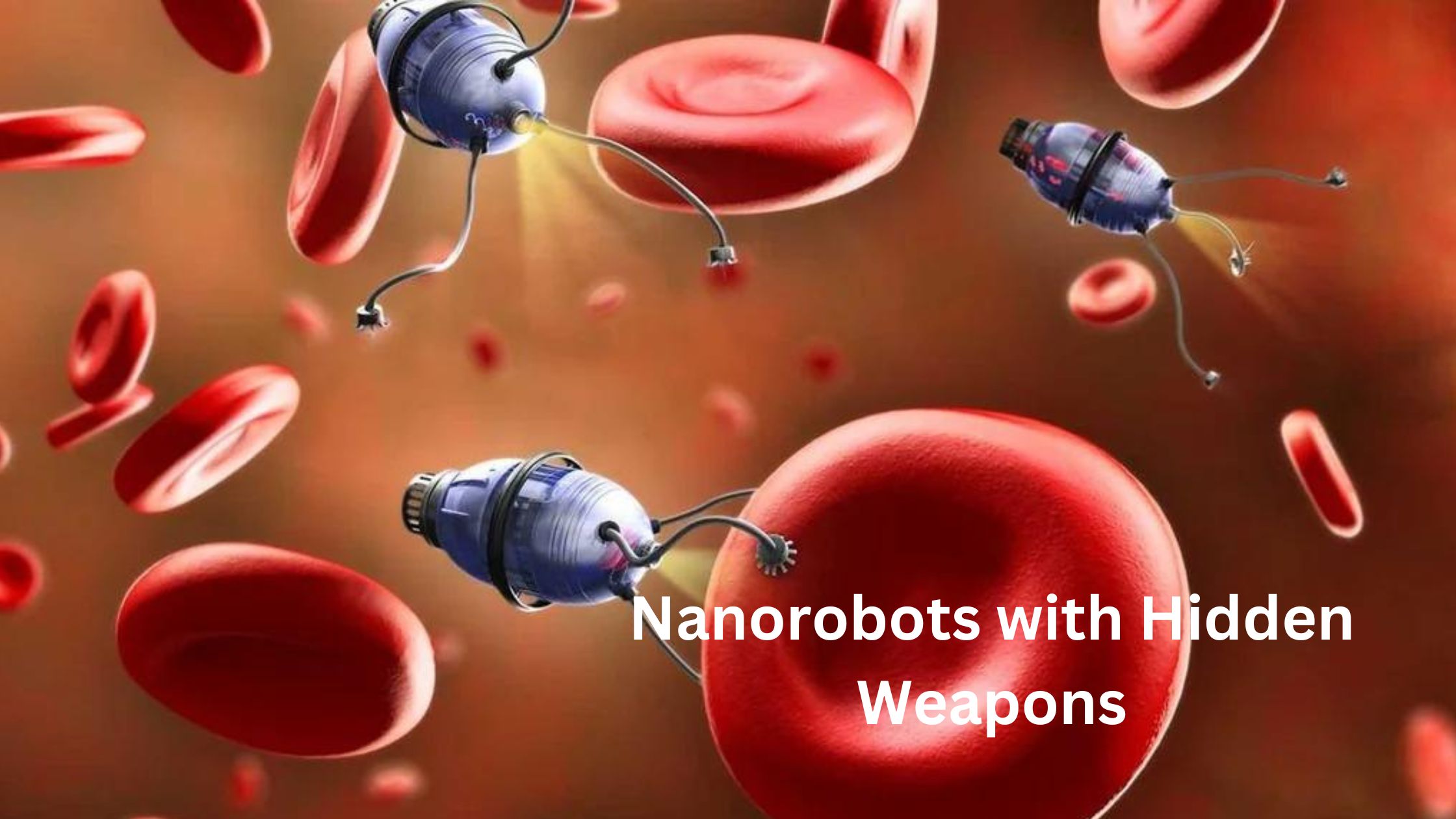Introduction
Cancer remains one of the most daunting challenges in modern medicine. Despite advancements in early detection and treatment, the disease continues to claim millions of lives every year. However, a groundbreaking innovation is offering new hope: Nanorobots with Hidden Weapons designed to seek out and destroy cancer cells. This article explores the incredible potential of nanotechnology in cancer treatment, focusing on how these tiny machines could revolutionize the fight against cancer.
What Are Nanorobots?
Nanorobots are microscopic machines, often just a few nanometers in size, engineered to perform specific tasks at the molecular level. In the context of medicine, these tasks can include delivering drugs directly to targeted cells, repairing damaged tissues, or in this case, eliminating cancer cells. These nanorobots are designed to navigate through the bloodstream, locate cancer cells, and deliver their “hidden weapon” — a specialized agent that kills the cancer cells while sparing healthy ones.
How Do Nanorobots Target Cancer Cells?
One of the most remarkable features of nanorobots is their ability to target cancer cells with precision. Unlike traditional cancer treatments, such as chemotherapy, which affects both healthy and cancerous cells, nanorobots can differentiate between the two. They are programmed to recognize specific markers or antigens present on the surface of cancer cells. Once they identify these markers, the nanorobots latch onto the cancer cells and deploy their hidden weapon.
The Hidden Weapon: How It Works
The “hidden weapon” within these nanorobots can take several forms, depending on the type of cancer and the treatment strategy. Here are some of the most promising approaches:
- Drug Delivery
- Some nanorobots are equipped with tiny reservoirs filled with potent anticancer drugs. Upon reaching the cancer cell, the nanorobot releases the drug directly into the cell, ensuring that the treatment is localized and minimizes damage to surrounding healthy tissue. This targeted approach enhances the effectiveness of the drug and reduces side effects commonly associated with chemotherapy.
- Gene Therapy
- Another approach involves nanorobots carrying genetic material designed to alter the behavior of cancer cells. These nanorobots can introduce genes that either suppress the cancer cell’s ability to grow and divide or trigger apoptosis, the process by which cells self-destruct. This method holds promise for treating cancers that are resistant to traditional therapies.
- Hyperthermia
- Some nanorobots are designed to deliver a form of hyperthermia — localized heat — directly to the cancer cells. By raising the temperature of the cancer cells, the nanorobot can induce thermal damage, leading to the death of the cell. This technique can be particularly effective when combined with other treatments, such as radiation therapy.
- Mechanical Destruction
- The most innovative and futuristic approach involves nanorobots that physically destroy cancer cells. These nanorobots are equipped with mechanical arms or sharp edges that can puncture the membrane of a cancer cell, causing it to rupture and die. This method is still in the experimental stages but offers a fascinating glimpse into the potential of nanotechnology in medicine.
Advantages of Using Nanorobots in Cancer Treatment
- Precision Targeting
- One of the most significant advantages of nanorobots is their ability to target cancer cells with incredible precision. This reduces the collateral damage to healthy cells, a common issue with conventional treatments like chemotherapy and radiation.
- Reduced Side Effects
- Because nanorobots deliver treatment directly to cancer cells, patients are likely to experience fewer side effects compared to traditional therapies. This could significantly improve the quality of life for cancer patients, who often suffer from the harsh side effects of chemotherapy.
- Lower Doses of Drugs
- With targeted delivery, smaller doses of drugs are required to achieve the same therapeutic effect, which further reduces the risk of side effects and toxicity. This also makes it possible to use drugs that were previously considered too potent or harmful for traditional systemic administration.
- Versatility
- Nanorobots can be programmed for a variety of tasks, making them a versatile tool in cancer treatment. Whether it’s delivering drugs, altering genes, or physically destroying cells, these tiny machines can be adapted to treat different types of cancer effectively.
- Potential for Early Detection
- In addition to treatment, nanorobots could also play a role in early cancer detection. By circulating through the body and monitoring for specific cancer markers, nanorobots could identify cancerous cells long before symptoms appear, leading to earlier and more effective treatment.
Challenges and Future Prospects
While the potential of nanorobots in cancer treatment is enormous, several challenges remain. For one, the technology is still in the early stages of development, and extensive clinical trials are needed to ensure its safety and efficacy in humans. Additionally, the production of nanorobots must be scalable and cost-effective for widespread use.
Another challenge is the immune system’s response to these foreign machines. There is a risk that the body could recognize nanorobots as invaders and attack them, rendering the treatment ineffective. Researchers are working on ways to “cloak” nanorobots or make them biocompatible to avoid detection by the immune system.
Despite these challenges, the future of nanorobots in cancer treatment looks promising. Advances in nanotechnology, coupled with a better understanding of cancer biology, are likely to overcome these obstacles in the coming years. The result could be a new era in cancer treatment, where precision, efficiency, and minimal side effects become the norm.
Conclusion
Nanorobots with hidden weapons represent a revolutionary approach to cancer treatment. By combining the precision of nanotechnology with innovative methods for destroying cancer cells, these tiny machines have the potential to transform the way we treat one of the world’s most deadly diseases. While challenges remain, the progress made so far suggests that nanorobots could soon become a cornerstone of cancer therapy, offering new hope to millions of patients worldwide.
Read More: The Future of Smart Speed Bump
